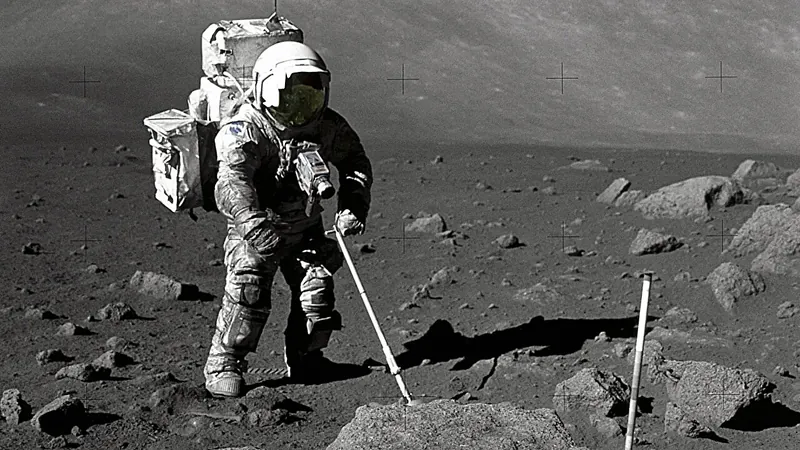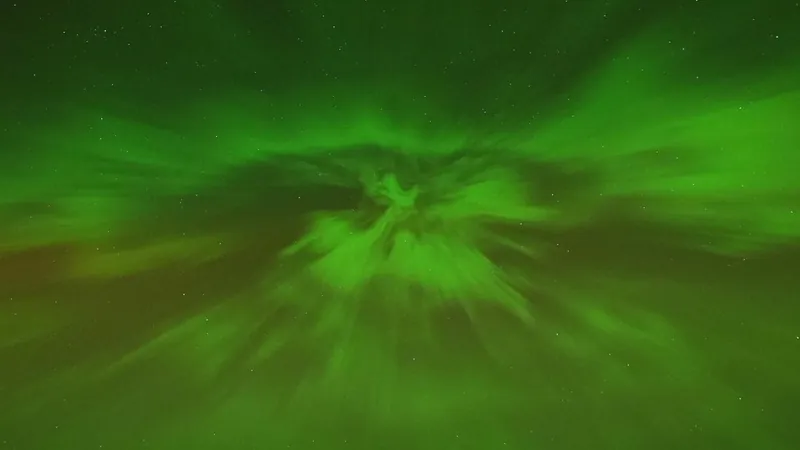
The Moon's Mysteries: How Apollo Missions Revolutionized Our Understanding
2025-08-25
Author: Charlotte
The Moon: Earth's Unusual Companion
Isn’t it fascinating how our moon stands out in the solar system? Unlike Mercury and Venus, which have no moons, or Mars, boasting two tiny captured asteroids that hardly count, Earth’s moon is a colossal natural satellite—1.5% the mass of our planet! This brings us to a burning question: How did we end up with this massive lunar companion?
Early Theories: A Puzzle of Possibilities
In the early 20th century, scientists tossed around a plethora of hypotheses. Some speculated that the moon was a protoplanet captured by Earth, others suggested it was formed from debris flung off during Earth's chaotic, molten youth. There were even theories proposing the moon sprang from collisions between protoplanets. However, all these ideas were ultimately dismissed as incorrect.
Apollo Missions: The Game-Changer
Enter the Apollo missions! With astronauts bringing back lunar samples, our understanding of the moon was revolutionized. These samples uncovered critical evidence about the moon's fiery past, marked by a once molten surface, evidenced by its igneous rocks that solidified from magma.
KREEP: A Surprising Discovery
Among these findings was the intriguing presence of KREEP-rich rocks—yes, KREEP! An acronym for potassium, rare-earth elements, and phosphorus, this peculiar combination pointed to an ancient magma ocean, requiring tremendous energy to create.
The Oxygen Puzzle
Another remarkable finding was the discovery of oxygen. Though it’s bound in lunar rocks, the moon boasts stable isotopes similar to Earth’s, suggesting a shared origin, despite its mysterious lack of heavier elements like iron.
The Giant Impact Hypothesis: Moon’s Origin Unveiled
These discoveries coalesce into the giant impact hypothesis, which posits that a Mars-sized body called Theia collided with Earth during its formation. This catastrophic event hurled debris into orbit, forming the moon. The collision explains both the similarities and differences in the moon's and Earth’s elemental compositions.
Apollo: More Than Just Science
The Apollo missions were more than just a scientific endeavor; they unlocked technological advancements and engineering marvels, enhancing our understanding of the universe. Each lunar success contributed vital knowledge, proving that those 12.5 days on the moon were nothing short of extraordinary.
Looking Ahead: The Future of Space Exploration
As we ponder future missions to the moon or Mars, let's reflect on what we gained from Apollo. This journey into the cosmos not only illuminated the moon's origins but opened doors to endless possibilities. Imagine what further discoveries await us if we continue to explore!









 Brasil (PT)
Brasil (PT)
 Canada (EN)
Canada (EN)
 Chile (ES)
Chile (ES)
 Česko (CS)
Česko (CS)
 대한민국 (KO)
대한민국 (KO)
 España (ES)
España (ES)
 France (FR)
France (FR)
 Hong Kong (EN)
Hong Kong (EN)
 Italia (IT)
Italia (IT)
 日本 (JA)
日本 (JA)
 Magyarország (HU)
Magyarország (HU)
 Norge (NO)
Norge (NO)
 Polska (PL)
Polska (PL)
 Schweiz (DE)
Schweiz (DE)
 Singapore (EN)
Singapore (EN)
 Sverige (SV)
Sverige (SV)
 Suomi (FI)
Suomi (FI)
 Türkiye (TR)
Türkiye (TR)
 الإمارات العربية المتحدة (AR)
الإمارات العربية المتحدة (AR)